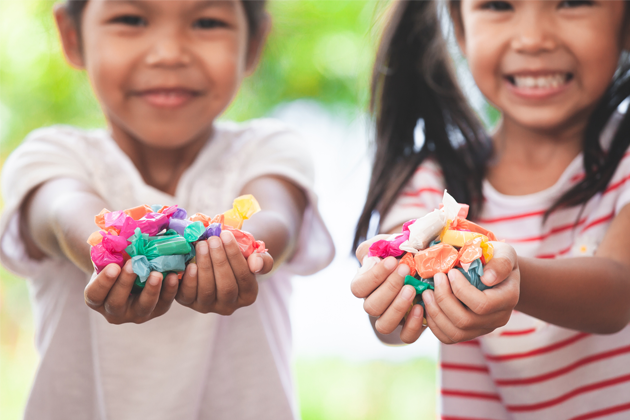Benefits of Giving and Gratitude
The holiday season is upon us. During this time, there will be many opportunities to experience giving and gratitude both of which provide many benefits for health and overall well-being. This is essential knowing the stress today’s adults and children face. When we give and when we receive, we lower stress and boost happiness.
Giving time, energy, expertise, or even tangible things to others prompts the brain to release dopamine, a feel-good hormone. Giving, also known as generosity, provides the experience of feeling valuable to others. A sense of value is so important that Starr’s Circle of Courage resilience model includes generosity as a key universal need for all people, regardless of age, to feel whole.
Generosity is beneficial for the giver and when we are on the receiving end of generosity, we experience gratitude, also a well-being booster. Perhaps someone offers support, nature provides a beautiful sunny day before the weather turns cold, or a neighbor shares a baked good. The feeling we have in these moments is often described as calm, content, and grateful. Research supports experiencing gratitude makes adults and children happier overall and results in better sleep, less physical complaints, and an improved ability to cope with stress.
Giving and Gratitude in Action
When adults teach and model giving and gratitude, children learn how to engage in each. The more opportunities a child has over time, the more giving and gratitude are part of their lives. And, as adults teach and model, they also reap the benefits. However, just saying, “thanks” or dropping canned goods off at a food drive isn’t quite enough. There are three components necessary to gain the rewards associated with experiencing generosity and gratitude. These components include notice, feel, and response.
Here are some examples to help teach, model and practice embracing the experiences of giving and gratitude. As you read through and discuss each example, take the time to be present with how more awareness of what is happening allows a fuller experience of both giving and gratitude.
Giving in Action: Notice, Respond, Feel
Example: Canned food drive at school
Notice: There is a canned food drive at school.
Respond: I want to donate food to school. I bring canned goods to the food drive.
Feel: Helping others in need makes me feel good. My body feels happy, and I am proud of how I can do my part to help.
Example: Offering a friend help with schoolwork.
Notice: My friend is struggling in Math.
Respond: I offer my friend help with Math problems that I understand.
Feel: I feel valuable because I was able to help support my friend. I feel more connected to my friend and good about myself for what I did to help.
Gratitude in Action: Notice, Feel, Respond
Example: Being included in lunch.
Notice: She invited me to sit with her at lunch.
Feel: I feel like I belong, and she likes me. I feel safe, connected, and calm.
Respond: I smile and say, “Yes”.
Example: A teacher being kind.
Notice: I was late to school. My teacher asked, “are you feeling alright – do you need anything?”
Feel: My teacher noticed me and cares enough about me to ask how I am. This calms down my body and makes me feel safe to ask her if I need support.
Respond: I thank my teacher and tell her I will let her know if I need anything.
Giving and Gratitude Activities
Talk to children about giving and gratitude or engage in one or more of the following activities. Remember to take time to identify the generous gesture, how it makes the giver and the receiver feel and how both respond.- Affirmation cards
- Color in affirmation cards that say things such as “I am thankful” or “It feels good to be kind.”
- Giving thank you notes, cards are artwork to others.
- Create thank you notes or cards with words or pictures for friends and colleagues.
- Giving and Gratitude Trees
- Draw a large tree on a board. Cut out paper leaves and write words or images on them that are examples of ways to give or things to be grateful for on them. Post them on the tree.
- My strengths can be used to help others.
- Create a list of strengths. What are you good at? As you look at the list, how can you use these strengths to help others who might benefit from your assistance. Put one of your ideas into action.
- ABC’s of gratitude
- Identify words for each letter of the alphabet that describe ways to be generous or give to others. Do the same with words that describe things, people, or experiences for which you are grateful.
- Classroom meeting or circle
- During classroom meetings or circles, spend time talking about what generosity and gratitude means and how both can be experienced.
Take advantage of this time of year to experience the benefits both giving, and gratitude can provide. There will be countless opportunities all around you. Whether you are giving or receiving or helping children as they give and receive, pause, and notice, feel, and respond.


